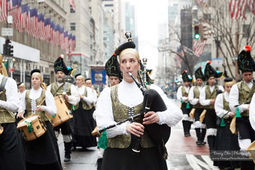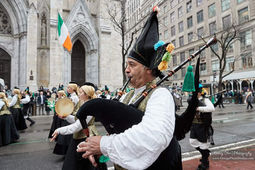
COMPLETE HISTORY OF THE BAND
The Banda de Gaitas de Paramos was born in May 2007 at the Laxes Cultural Center, under the direction of José Manuel Caballero Fernández as teacher of bagpipes and percussion. At this time he begins to train musicians, some with musical knowledge but the vast majority without previous contact with music.
PRIMEIRAS FOTOS DA BANDA
The band's first performance was in December 2008, more specifically at the association's "Christmas Festival". This performance will be followed by performances in Galicia, Asturias, Cantabria, Zamora, Portugal, Germany, Barcelona, Madrid, Tarragona, etc. As we can see, his history throughout these years of life is made up of performances both nationally and internationally.
In 2013, the year in which Sergio Caballero Fernández joins as percussion teacher, the band travels to Versmold (Germany), on the occasion of the "European is dancing in Versmold" festival, sharing the stage with groups from Serbia, Poland, Portugal and Germany .
FOTOS EN ALEMANIA
Another notable event was the first prize won in 2017 in the XXVI League of Bagpipe Bands.
Between the years 2015 and 2019, he organized the Bagpipe Bands Meeting "Cidade de Tui", in which prestigious bands from different parts of the Iberian Peninsula participated: B.G. Villa de Xixón, B.G. Sounds of Cossetania, B.G. As Portelas, B.G. of Villaviciosa, etc.
The most recent event and, so far, the most important, is the trip in 2022 to New York City, invited by Celtiberian Heritage – New York to participate in the Saint Patrick's Day Parade; trip in which concerts were also held at the Spanish Center in Queens, Casa de Galicia in Queens, a parade in New Jersey, etc.
FOTOS EN NEW YORK
At present, this group is made up of more than 50 members, and it also has a group of students of all ages, who receive lessons in musical language, bagpipes and traditional percussion.
As we have already mentioned, the Banda de Gaitas de Paramos seeks to maintain the musical tradition of Galicia by playing traditional Galician pieces, but in addition, within its repertoire it also includes songs from different musical styles and, due to proximity, traditional Portuguese songs; contributing small traces of modernity, thanks to the incorporation of unusual instruments in this type of training.
We end this brief history by mentioning that the actions are common in the neighboring country (Portugal) and in other parts of the Iberian Peninsula such as: Asturias, Cantabria, Zamora, Madrid, Tarragona, etc. In addition, clearly, from anywhere in our Autonomous Community.
























